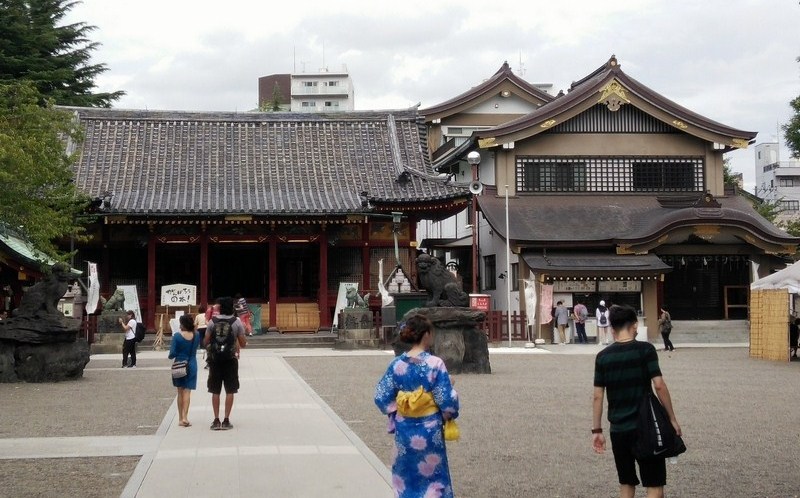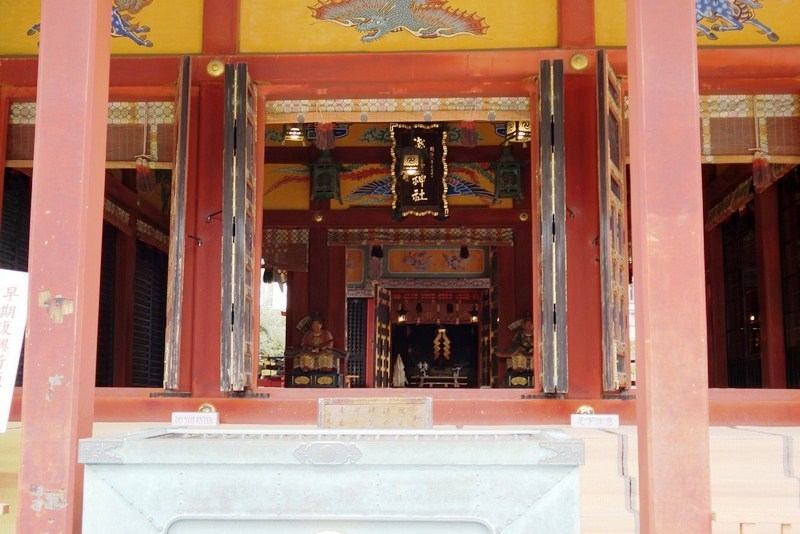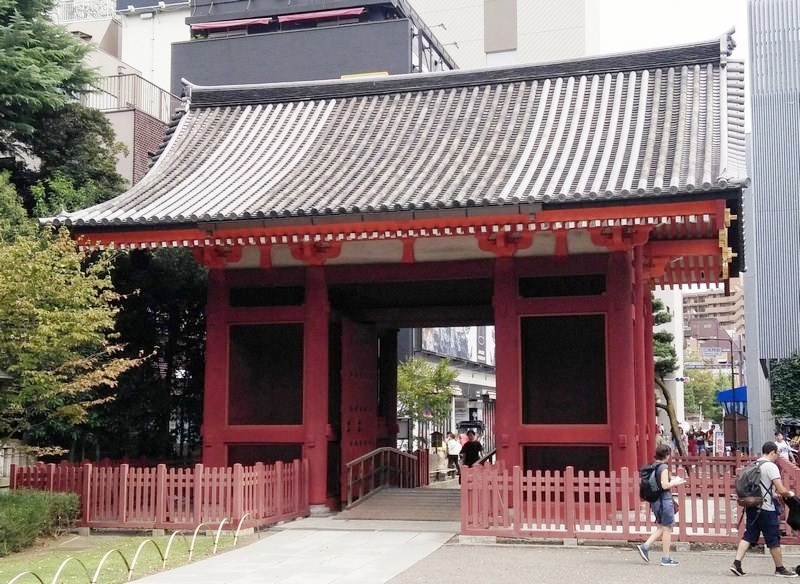The Asakusa Shrine (浅草神社 Asakusa-jinja), one of the most famous Shinto shrines in the city, is also known as Sansha-sama (Shrine of the Three gods, san means “three” and sama means “shrine”). The shrine. popular among the public, stands only a few dozen meters to the left of the main hall on the east side of Sensō-ji Temple, down a street marked by a large stone torii.
Part of a larger grouping of sacred buildings in the area, the shrine honors the three men who founded the Sensō-ji. According to legend, on May 17, 628, two fishermen brothers, named Hinokuma Hamanari and Hinokuma Takenari, picked up a bosatsu Kannon statuette of Sensoji Temple caught in a fishing-net in the Sumida River. Hajino Nakatomo, the third man, was a wealthy landlord who, upon hearing about the discovery, approached the brothers.
He delivered an impassioned sermon about the Buddha to the brothers who were very impressed and subsequently converted to the Buddhist religion and devoted their lives to preaching the way of Buddhism. Nakatomo consecrated the Kannon statue in a small temple. These three men are worshiped here as Sanja Gongen.
The shrine, commissioned by Tokugawa Iemitsu, the third shogun of the Tokugawa dynasty, was built in 1649 during the Edo Period. It was integrated with Sensoji Temple until the Edo period. However, when the Gods and Buddha separation ordinance was promulgated in the Meiji period, it was separated from Sensoji and renamed Asakusa Shrine. Its beautiful, vermillon-lacquered shrine pavilion was built in the same style as the Nikko Toshogu, in the gongen-zukuri style of Shinto architecture.
Unlike many other structures in the area, including the Sensō-ji Temple, the shrine, along with the Nitenmon Gate, where the only two buildings in the area to survived the World War II Tokyo air raids of 1945. In 1951, because of this rich and long history, both were designated as an Important Cultural Property by the Japanese Government.
The Niten-mon Gate, located to the east of the main hall and to the right of Asakusa Shrine, was erected in 1618 (the current gate was said to have been rebuilt in 1649) as a shrine gate, with statues of Toyoiwamado no Mikoto and Kushiiwamado no Mikoto placed on either side.
The gate was left standing after the deity enshrined in Toshogu was moved to Koyozan, inside of Edo Castle. After the separation of the Buddhist and Shinto religions during the Meiji Restoration, Shinto deities were removed to Asakusa Shrine. In their place, a statue of Tatenmon was enshrined, but this has subsequently been lost. This massive, 8.13 m. wide (at the beam) structure has 8 pillars and was built in the mitsumune zukuri style with a tiled roof in built in the kiritzuma zukuri style.
The shrine‘s annual, popular Sanja Matsuri festival, one of the Three Great Festivals of Edo (the old name of Tokyo), is held in late spring for 3 days (Friday to Sunday) every third weekend of May. which takes place over 3–4 days . During the festival, the surrounding streets are closed to traffic, from dawn until late evening. Well known for the “soul swing,” the festival vividly demonstrates the traditional Edo style, depicted in the old saying “fights and fireworks are Edo’s flowers.” During the festival, portable shrines called mikoshi are wildly swung around in a wild parade, reaching a climax when three mikoshi called ichi-no-miya, ni-no-miya and san-no-miya leave and return to Asakusa Shrine. The procession includes 120 mikoshi from a total of 44 parishioner associations affiliated with Asakusa Shrine, making it Tokyo’s most spectacular festival.
Asakusa Shrine: 2-26-1, Asakusa, Taitō-ku, Tokyo 111-0032, Japan. Tel: 03-3844-1575. Website: www.asakusajinja.jp/english/
How to Get There: The shrine is a 7-min. walk from Asakusa Station (Toei Asakusa Line, Tokyo Metro Ginza Line, Tobu Isesaki Line, Tsukuba Express.










Pingback: Sensō-ji Temple (Tokyo, Japan) – B.L.A.S.T. – Live Life to the Fullest ……… Don't Stay Put